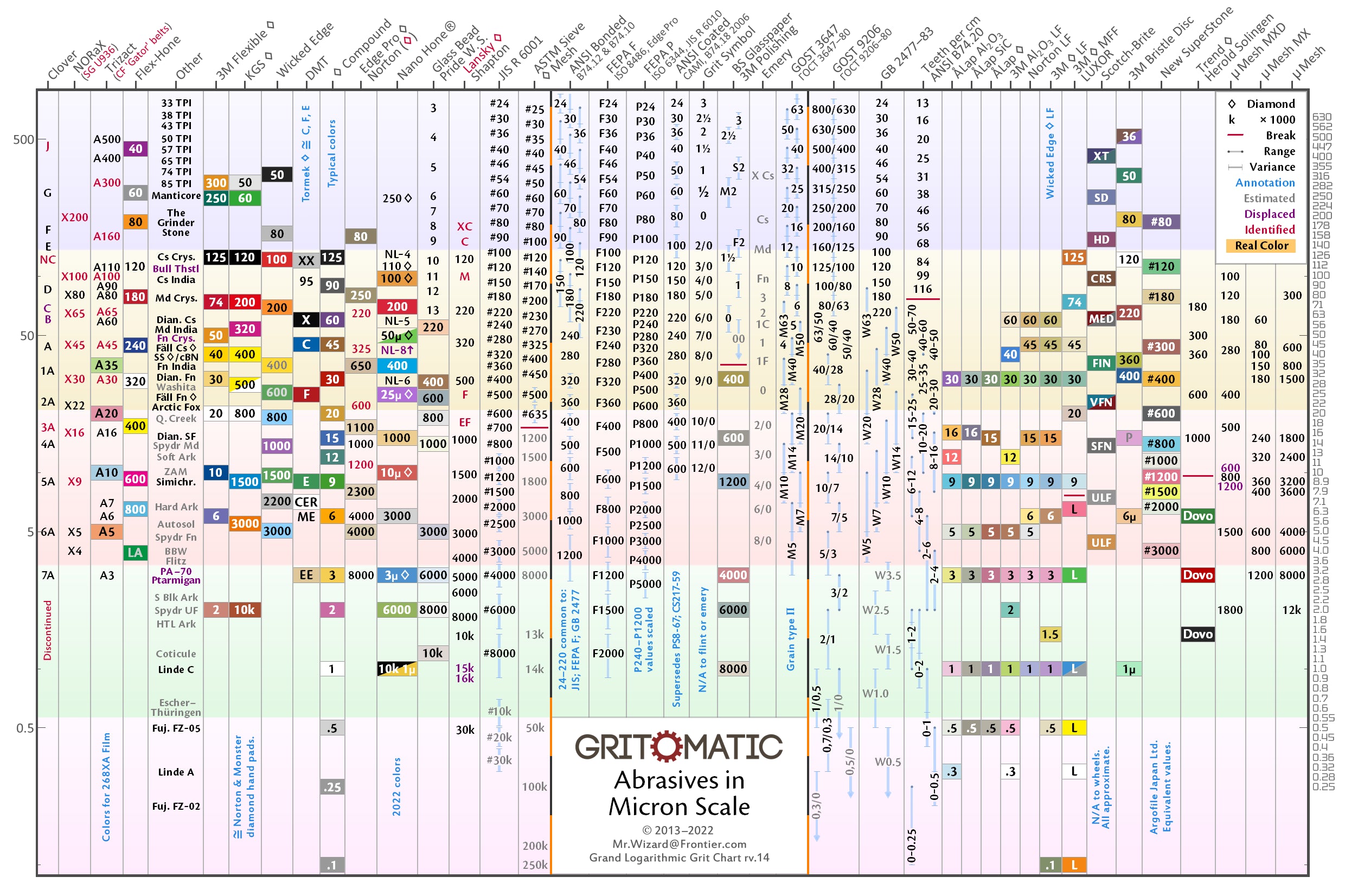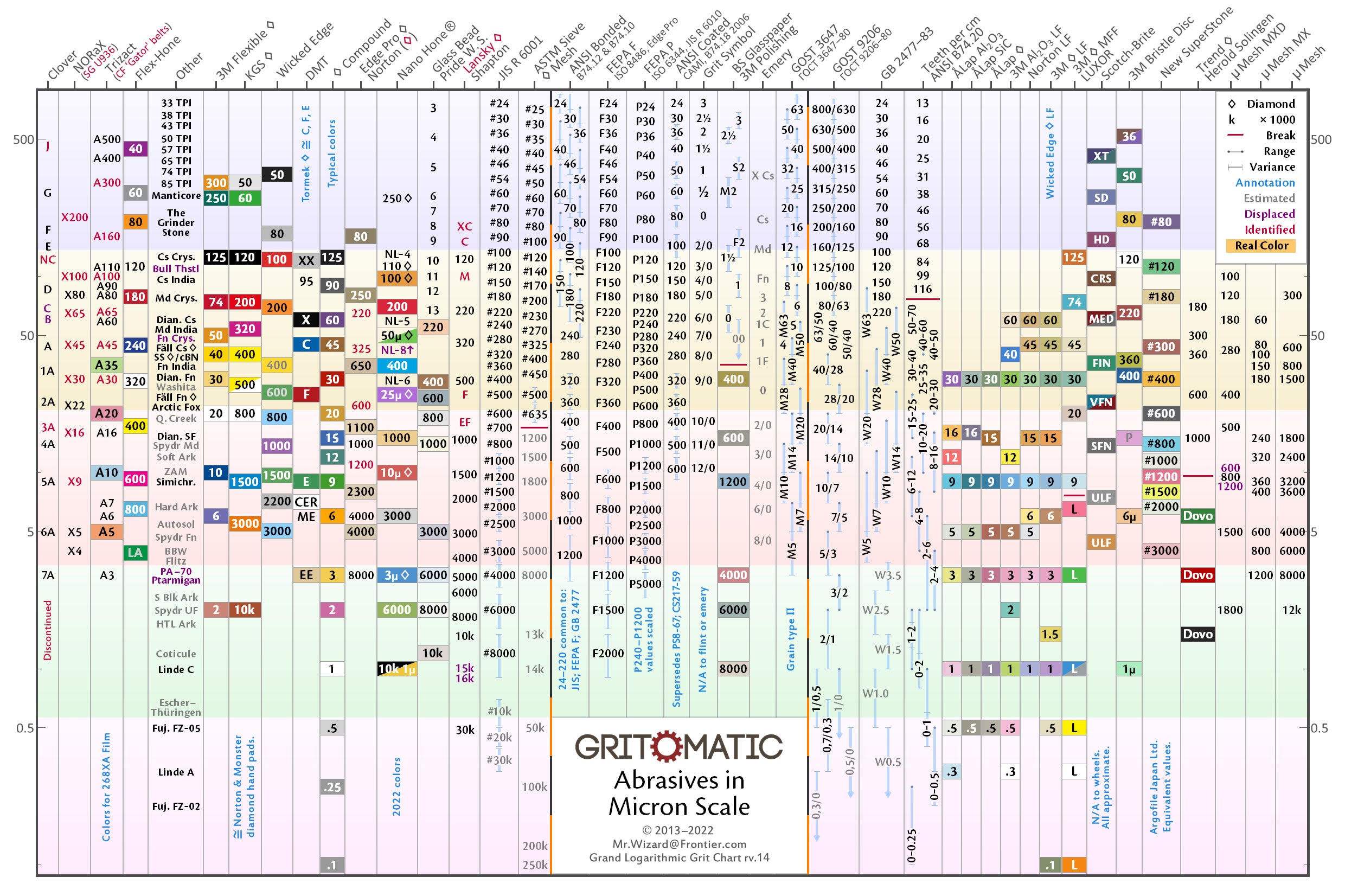![Venev Orion Series Diamond [6" x 1"]](http://www.gritomatic.com/cdn/shop/files/venev-bonded-diamond-for-edge-pro_490x.progressive.jpg?v=1739342077)
Venev Orion Series Diamond 6" x 1"
- #1 Best Seller in 💎6" Stones and Strops
- #1 Best Seller in 🧊6" Superabrasives
- #3 Best Seller in 🛒Full Catalog
SKU: ORI-B100-80
AVAILABILITY: In stock (62 items)
Hurry! Only 62 Left in Stock!
Free Shipping
on orders over $50
Returns in 14 Days
following delivery date
US Customer Support
(470) 227-7960
Venev Orion Series Bonded Diamonds are used for sharpening knives on Hapstone, TSProf, and all Edge Pro compatible guided knife sharpeners. Diamond sharpening stones offer excellent performance in sharpening knives of any steel.
Orion series consists of a 3mm-thick diamond-bearing plate on an Edge Pro aluminum base. The diamond-bearing plate contains evenly distributed diamond grains with resin bonding. The manufacture of bonded diamonds is more complex than for coated diamonds. Bonded diamonds provide better feedback and give the sharpening stone a much longer lifespan.
The OCB version of Venev Diamonds utilizes a brand-new yellow binder with no abrasive particles in the composition. OCB is available in fine grits only and offers better scratch-free sharpening results.
All Venev diamonds use FEPA-F grit classification. Orion series is available in 8 grits from F60 to F1500. F60 to F240 utilize legacy binder, F400 to F1500 utilize OCB binder. Orion series is available only in 100% diamond concentration.
Specification
- Product size: 160 x 25 x 6mm (6" x 1" x ¼")
- Working surface: 150 x 24 x 3mm (6" x 1" x ⅛")
- Weight: 55 g (2 oz)
- Abrasive: Synthetic Diamonds with resin bonding
- Extra materials: Aluminum
- Flatness tolerance: up to 0.2mm
How to use
Venev Diamonds are recommended to be used with water as a lubricant for the best feedback. The diamond does not absorb water. Splash water on the stone's surface. Dry usage is an acceptable practice, although it results in faster wearing and speeds up stone loading.
FAQ
-
Where is OCB 2000 in the Orion series?
We decided to phase out OCB 2000 from the Orion series. OCB 2000 is an experimental product of Venev in all form-factors. OCB 2000 creates hair whittling edge of good geometry and improves edge retention. However, OCB 2000 creates a scratch pattern with parasite scratches caused by diamond agglomeration. OCB 1200 is an optimal finish stone for most customers because it creates a beautiful mirror finish edge and a very good scratch pattern.
-
Do I need to lap Orion diamonds?
Lapping improves the sharpening quality of fine OCB diamonds, but it's not mandatory. Lapping can also eliminate the break-in period after purchase. Lapping is strongly recommended for OCB 2000.
-
Which type of diamond is better bonded or coated?
Coated diamonds have all the diamond grains on the surface, maximizing performance. Bonded diamonds spread the diamond grains over their whole volume, and work in similar fashion to conventional abrasives. Only bonded diamonds can be flattened, lapped, repaired or refreshed. Bonded diamonds are universal and able to sharpen any steel. Bonded diamonds have much better feedback and a longer lifespan.
-
Can I buy Venev diamonds to sharpen all my knives? If they are okay for hard steel, they should be even better for soft steel, right?
Yes, Venev diamonds are universal and will wear extremely slowly on both hard and soft steel.
-
Can I sharpen ceramic knives with Venev diamonds?
Theoretically, yes. However, sharpening ceramic knives is technically difficult and uneconomical in most cases. Diamond stones can cause microchipping when used on ceramics. Consider purchasing a new ceramic knife instead of sharpening it.
-
Well-known manufacturers like DMT and Eze-Lap use coated diamonds in their products. Doesn't that mean bonded diamonds are inferior?
Absolutely not. Coated diamond technology is developed in the USA due to its lower cost. The bonded diamond technology is more advanced and more expensive.
Recent Questions




https://www.gritomatic.com/pages/cont... See full answer »
I cleaned the matrix stone with dish soap and a stiff brush, it was better, but not like an 80 grit diamond plate.
If there is not a problem, I'm disappointed in the expensive stones. See more »

Diamond plates are great for new bevel setting and damage repair on a blade, but once the hard work is done, it is far better to use a resin or bonded type stone for finishing it off and for all future sharpening on that knife. See full answer »

Matrix stones are made in the USA and have a slightly softer bond than the Venev stones. The maker of the Matrix stones recommends edge trailing sharpening strokes due to the softer bond. With Venev stones you can sharpen any way you prefer - edge leading, trailing, scrubbing etc.
The Matrix stones have a very nice milled aluminum backing which looks and works great. The Venev Orion stones have an aluminum backing which has been cut in stead of milled, but also works well. See full answer »

C25% 2/1 Venev Industrial Diamonds back side, stone side stamped 16/ OTK?
A - The 2/1 stone is a bit finer than the F1500 grit Fepa-F rating. 2/1 is the particle size of the diamonds in micro meters. So, the grit particles in this stone is mostly between 2 and 1 micron. See full answer »

https://www.gritomatic.com/pages/grit...
Your Venev stones are rated using the Fepa-F grit rating, and Naniwa Chosera stones would be approximately the JIS R 6001 rating. You can compare the grit rating side by side.
As an example, your Venev F1500 stone in the Fepa-F colmun would equate to approximately #6000 grit JIS R 6001. Compared to a Japanese Shapton stone, it would be around #8000.
Note, for a great every day use edge with a lot of bite, you might consider finishing with your Venev F400 or at the most the F800 stone. See full answer »

I own the Idahone eraser, Bodrid dressing stone, and the Breeze semi-natural nagura. The description on the latter two are relatively vague, could you explain the how they work and why they are helpful? I also own some SiC lapping powder. What, if any, measures do you recommend?
Thank you very much for your help. See more »

I own the Idahone eraser, Bodrid dressing stone, and the Breeze semi-natural nagura. The description on the latter two are relatively vague, could you explain the how they work and why they are helpful? I also own some SiC lapping powder. What, if any, measures do you recommend?
Thank you very much for your help.
A - Typically, a conditioning stone consists of a softer or similar bond than the stone it is used on. Both Bodrid and Breeze stones you have fall in this category. When you wet them and rub them over the surface of the stone you're conditioning, they release their abrasive and bond readily, leaving some abrasive on the surface of the stone being conditioned. This removes the very top , very thin layer of the stone being conditioned and thus refreshes & cleans the surface of the stone.
Using SiC lapping powder will act the same, but much more aggressively remove more of the stone being lapped, removing more of the top of the stone. If done correctly, this flattens and completely refreshes the stone being lapped. In your case, it may be necessary to do this. See full answer »

SKU: COMP-DM50-10
AVAILABILITY: In stock (8 items)
PRODUCT TYPE: Accessories and Tools
VENDOR: Venev Industrial Diamonds
Diamond Compound is a very effective method of honing and polishing the cutting edge of the knife. Diamond is the hardest commercially available substance on Earth. Diamond Compound consists of synthetic diamond powder.Diamond Compound can be used with any strop...
SKU: CEN-B100-80.150
AVAILABILITY: In stock (28 items)
PRODUCT TYPE: 6" Dual Side Sharpening Stone
VENDOR: Venev Industrial Diamonds
Attention! The Centaur series now includes F1200 + F1500 grit combination.Venev Centaur Series Dual Side Diamonds are used for sharpening knives on Hapstone and TSProf guided knife sharpeners, as well as freehand sharpening. Diamond sharpening stones offer excellent performance in sharpening...
SKU: GEM-M100-150
AVAILABILITY: In stock (19 items)
PRODUCT TYPE: 6" Mounted Sharpening Stone
VENDOR: Venev Industrial Diamonds
Curved Venev Bonded Diamonds are used for sharpening inwardly curved blades on Hapstone knife sharpeners. Diamond sharpening stones offer excellent performance in sharpening knives of any steel. The working surface is curved. Curved diamonds are designed to sharpen kukris, karambits,...
SKU: CRB-B100-80.150
AVAILABILITY: In stock (47 items)
PRODUCT TYPE: 4" Dual Side Sharpening Stone
VENDOR: Venev Industrial Diamonds
Venev 4" Cerberus Dog Series Dual Side Diamonds are used for sharpening knives on KME and Work Sharp Precision Adjust guided knife sharpeners. Cerberus Dog Series supersedes the Dog series. At the first glance, Cerberus and Dog look the same. Cerberus...





![Venev Centaur Series Dual Side Diamond [6" x 1"]](http://www.gritomatic.com/cdn/shop/files/6-x-1-dual-side-bonded-diamond_600x.progressive.jpg?v=1739344451)
![Venev Gemini Series Curved Diamond [6" x ½"]](http://www.gritomatic.com/cdn/shop/files/curved-metallic-bonded-diamond-for-edge-pro_600x.progressive.jpg?v=1739342093)
![Venev Cerberus Dog Series Dual Side Diamond [4" x 0.6"]](http://www.gritomatic.com/cdn/shop/files/venev-cerberus-dog-series-dual-side-diamond_600x.progressive.jpg?v=1739344653)



